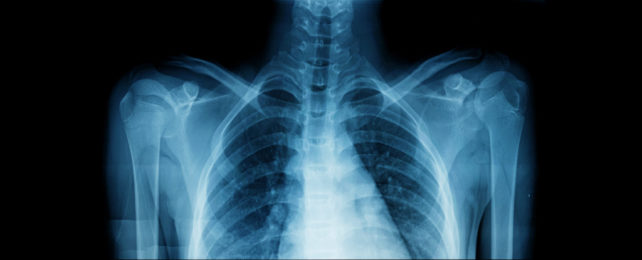A new study reports on a worrying link between higher levels of air pollution and faster bone loss through osteoporosis, a chronic skeletal condition that makes bones more fragile, and likely to break.
The risk of osteoporosis rises with age, and it's particularly common in postmenopausal women. Here, data on a diverse group of 9,041 postmenopausal women was gathered over 6 years, with researchers looking specifically at bone mineral density: an indirect indicator of osteoporosis and fracture risk.
Using home addresses for estimates of nitric oxide, nitrogen dioxide, sulfur dioxide, and PM10 particulate matter (pollution smaller than 10 micrometers, the diameter of a red blood cell), the researchers found that as pollution went up, bone mineral density went down across all areas of bone in the body – including the neck, spine, and hip.
"Our findings confirm that poor air quality may be a risk factor for bone loss, independent of socioeconomic or demographic factors," says biomedical scientist Diddier Prada from Columbia University in New York.
Past studies have shown an association between worse air pollution and a higher risk of bone fractures, as well as greater bone loss over time. This research adds data on postmenopausal women in particular, and on different air pollution mixes.
In particular, Prada and colleagues highlighted the link between nitrogen and the spine. A jump of 10 percent of this kind of pollution over 3 years was associated with an average yearly loss of 1.22 percent in lumbar spine bone mineral density, twice the amount the team calculated from normal aging.
According to the researchers, this is most likely due to bone cell death caused through mechanisms including oxidative stress, where toxic molecules from the environment cause damage to the body.
"For the first time, we have evidence that nitrogen oxides, in particular, are a major contributor to bone damage, and that the lumbar spine is one of the most susceptible sites of this damage," says Prada.
The study isn't enough on its own to prove a causal relationship – that the air pollution is definitely leading to bone loss – but considering the mass of research that's now forming, it looks like an increasingly plausible hypothesis.
It's also worth bearing in mind that while this particular study looked at postmenopausal women, the participants involved did cover a wide range of ethnic groups, locations, lifestyles, and socioeconomic backgrounds, making it more likely that pollution levels were, indeed, the underlying cause of bone loss.
The researchers want to see further efforts made in reducing air pollution – traffic is a major producer of nitrogen oxides, for example – and in detecting people who might be more vulnerable to it (including those with osteoporosis).
"Improvements in air pollution exposure, particularly nitrogen oxides, will reduce bone damage in postmenopausal women, prevent bone fractures, and reduce the health cost burden associated with osteoporosis among postmenopausal women," says epigeneticist Andrea Baccarelli from Columbia University.
The research has been published in eClinicalMedicine.
